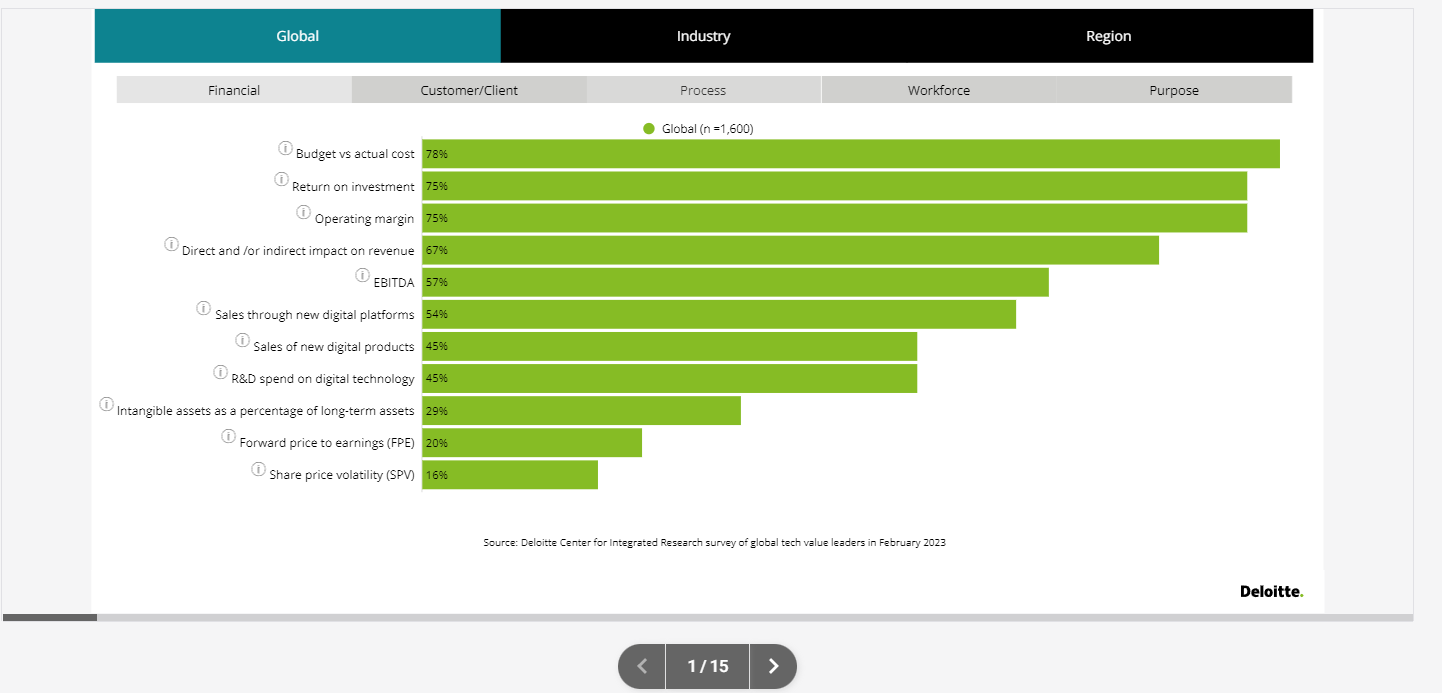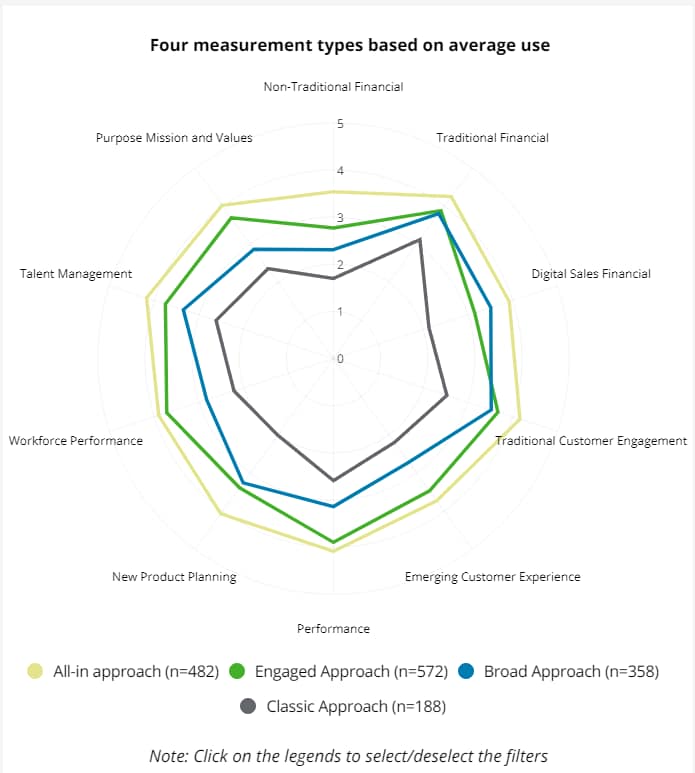Mapping Digital Transformation Value – Metrics that Matter
A comprehensive framework for identifying and capturing the full value of digital transformation across your organization.
Deloitte analysis shows 81% of respondents use productivity as the prime measure of digital transformation ROI. Are organizations factoring the right KPIs to measure digital transformation success? Our data shows respondents with a more holistic mindset are 20% more likely to attribute medium-to-high enterprise value to their digital transformations.
Organizations seeking to win on digital transformation today face two juxtaposing truths, which are: A significant majority of business leaders agree that digital transformation is the most important investment they can make to drive enterprise value. And an even greater majority of business leaders agree that they’re struggling to measure the value produced by their digital transformation investments. That is not to say that they’re not tracking value. The problem, however, is that the everyday go-to metrics just aren’t measuring up.
Deloitte conducted a study of 1,600 leaders to understand how they ascribe digital value. Our analysis revealed the structure, leading indicators, gaps, and hidden links in digital value measurement. Amidst the many concerns of leaders seeking to improve how their organizations measure digital transformation value, those who report the greatest value realized share several traits:
- To tell the full value story, they truly look at the full picture. Deloitte’s research yielded a taxonomy of 46 digital transformation value KPIs. Among these, 26 of the KPIs are used by fewer than 55% of organizations. Of the 20 that are most-commonly used, the majority cluster around a few themes, while others are ignored altogether. Value leaders look to employ the full spectrum of value KPIs.
- They avoid over-indexing on just a few types of value KPIs. When organizations reported on the KPIs they use to measure digital transformation value, notable clusters emerged. Value leaders take a more balanced view that includes commonly used KPIs alongside the less common ones.
- They treat the most common measurement challenges as highly solvable. The most commonly cited challenge, reported by 3 in 4 leaders, is the inability to define exact impacts or metrics—the solution to which begins with a structured, holistic measurement framework.
- They tend to share a common mindset. Those leaders who report the most impressive value outcomes are more likely to make certain types of digital investments, are more likely to remove certain barriers to value measurement and are more likely to promote a more complete value KPI framework. These leaders report they’re as much as 20% more likely to attribute medium-to-high enterprise value to their digital transformations.
Creating the digital transformation value framework
Digital transformation is “the single most important investment now and into the future that organizations can make to drive enterprise value,” according to 68% of respondents from Deloitte's 2023 Measuring Value from Digital Transformation survey. However, they struggle to measure that value with 73% citing the inability to define metrics the top barrier.
As a foundation to help leaders standardize how they ascribe digital value, Deloitte surveyed 1,600 respondents about their usage of key performance indicators (KPIs) in sizing and measuring it all. Our analysis looked at 46 KPIs across five value categories: Financial, Customer / Client, Process, Workforce, and Purpose.
Global KPI Use by Region and Industry

Exploratory analysis1 clustered the KPIs into ten sub-categories, giving a finer grain as to from where (globally) enterprises expect value to emerge. While these groupings are logical prima facie, they reflect the data and how KPIs often are used together. This is the structure of digital transformation value. It paints the picture as to where exactly respondents – globally and based on country, sector, type, and other factors – see value emerging with different levels of importance.
How are organizations looking at that full picture of digital value? Based on the global data, we can see the most-frequently-used digital value indicators is Productivity (81%). It is used over 5X more frequently than the least commonly used KPI (Share price volatility). The other dominant digital transformation KPIs are what one would expect: Budget vs. actual cost, Employee productivity, Customer engagement, Return on Investment, and Operating Margin.
When we zoom out and look at the use across the 46 KPIs, the bigger picture emerges. We’re able to see which KPIs have high, medium, and low utilization across global respondents. Not every KPI will be important for every organization; therefore, organizations need to critically assess, based on strategic importance, whether low usage is by design or an oversight. For example, these priorities vary by geography and industry.
Harnessing the potential of digital value measurement
Understandably, measuring digital value is not without challenges. Our analysis shows 73% of respondents believe that the ‘Inability to define exact impacts or metrics’ is a barrier to measuring digital value. ‘Inability to collect data’ as well as ‘Organizational silos’ rank in the top three. However, it’s worth getting right.
We looked at organizations that went the extra mile to measure digital value more holistically and found clear enterprise impacts. Respondents fell into four buckets based on how they used digital transformation KPIs, each measuring more intensely than the last: Classic, Broad, Engaged, and All-in respondents.

All-in respondents self-reported that a larger share of their enterprise value could be attributed to digital transformation than the other groups. Almost half (41%) of All-in respondents reported they attribute a medium-to-high share enterprise value to their digital transformations, more than any of the three groups.2 In fact, our analysis found they’re as much as 20% more likely than the lowest performing group to attribute a medium/high share of their enterprise value to digital transformation.3
The bottom line: when more holistic measurement is achieved, the broader your view of digital potential, the less systemic your measurement barriers, and the more likely you are to attribute medium-to-high enterprise value to digital transformation.
Read the full report to learn more about the digital transformation value framework, where organizations are over and under-indexing on specific KPIs, missing value links, and how to achieve an “All-in” approach to measuring digital transformation success.
To learn more, read the full research.


